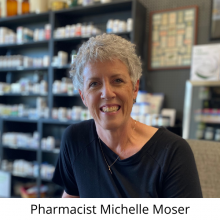Does Low Dose Naltrexone (LDN) help long-haul COVID?
Does Low Dose Naltrexone (LDN) help long-haul COVID? That is a fantastic and incredibly timely question. The answer to that is YES. In many situations, it helps to alleviate a wide variety of symptoms and reduce inflammation associated with long-haul COVID. Dr Pamela Smith has spoken on this issue quite extensively. A couple of studies are going on in the United States of using Low Dose Naltrexone associated with people who have long haul COVID. There's quite a bit written on that, and I believe in book three of the LDN Book Volume Three there is an entire chapter on that.. The dosing is the same routine as we normally see where we maybe start low and go slow. Maybe 0.1 to 1 milligram and slowly increase that every 7 to 14 days until someone finds their happy dose and of course that happy dose is very individualized. Sometimes it's three, sometimes it's three and a half. Sometimes it's four, four and a half, someplace in between there at the higher end but it doesn't necessarily always have to be the same dose. It can change and we can always lower the dose. Sometimes we can go up, a lot of times we go down.
In doing that there are a wide variety of inflammatory processes. What we see with COVID, we know that COVID attacks certain areas of the body, specifically the lung. It elicits the production of interleukin-6 which has been talked about quite a bit in the last couple of years. It is the primary cytokine that causes inflammation. It actually promotes inflammation and LDN works to block that. We see a reduction in inflammation just based on reducing that cytokine specifically. There's a few others other in a interleukins that it also helps to reduce. That is the clinical side of exactly where that works. Using LDN to reduce interleukin-6 sometimes 12 as well. We know that Low Dose Naltrexone works on the toll like receptor 4 and also nine and those two receptors are primarily on the cell wall and intracellular as well. By working on those toll like receptors we can see a variety of other chemical processes that change where we can move from an inflammatory allergic type response to a less allergic more immune modulatory.
What we have seen and what's written about in the LDN Book 3 is that there are some comprehensive protocols that Dr Zielsdorf includes in that book and I find those incredibly helpful. I actually give away LDN books to providers that I work with. it is a huge expense but at the same time it's a really great way to educate and you can always find those books on the Research Trust website. You can also order them from us. You can order them from a wide variety of other places as well. I do highly recommend reading those books even if that chapter does not necessarily pertain to you and your specific issues. Sometimes you learn a little bit more about how the inner workings of LDN works in a variety of issues. For example Dr Brian Udell didn't realize that outside of his pediatric population that Naltrexone was actually used for adults and he didn't know that for quite a while. I think that's fantastic and LDN is very well studied in pediatrics, as well as, in adolescents and adults. So when you're dealing with long-haul COVID, again, everybody responds a little bit differently because of comorbidities especially. I think LDN is absolutely worth a shot.








